NOTE, 12/16/22: We are aware of multiple allegations from customers who have not received units after paying for them and many folks say the company is not replying to emails or giving refunds when customers ask for them. We recommend that no one purchases a Swytch kit until they publicly address these concerns and/or begin shipping product more promptly. Sorry for any issues our post might have caused. — Jonathan Maus, editor and publisher, maus.jonathan@gmail.com.
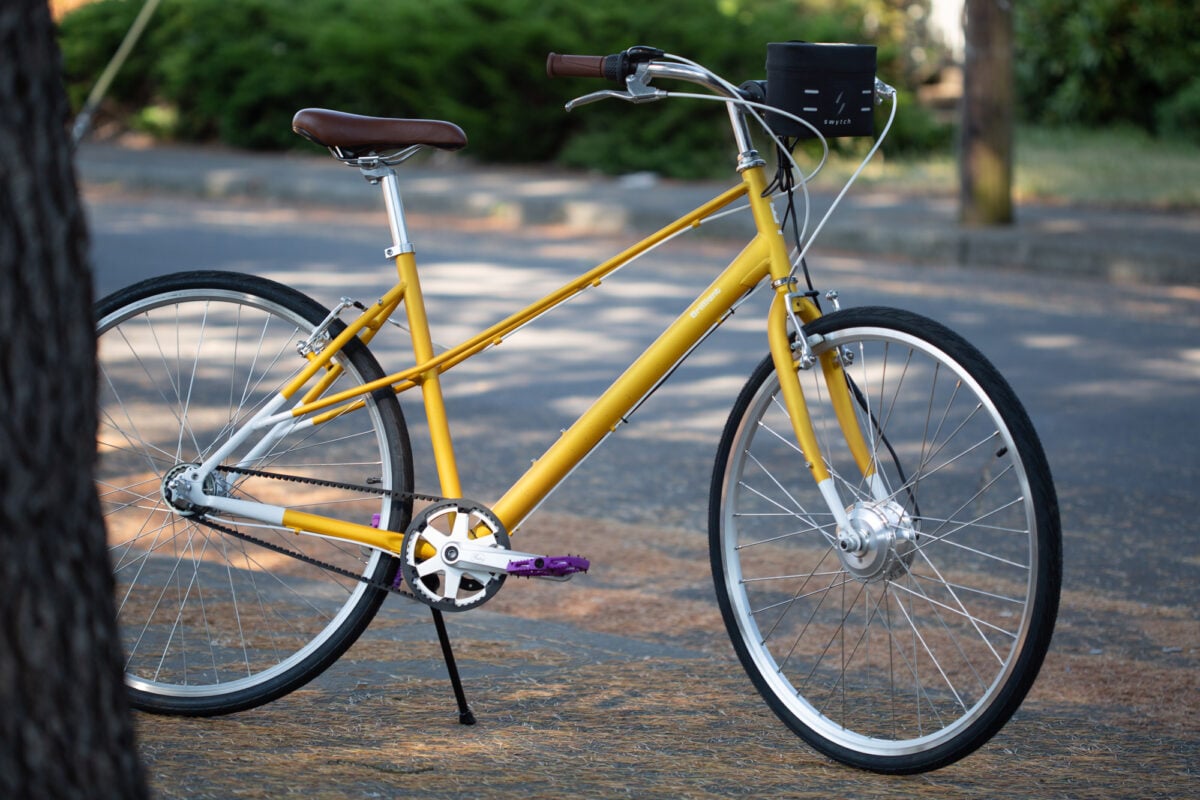
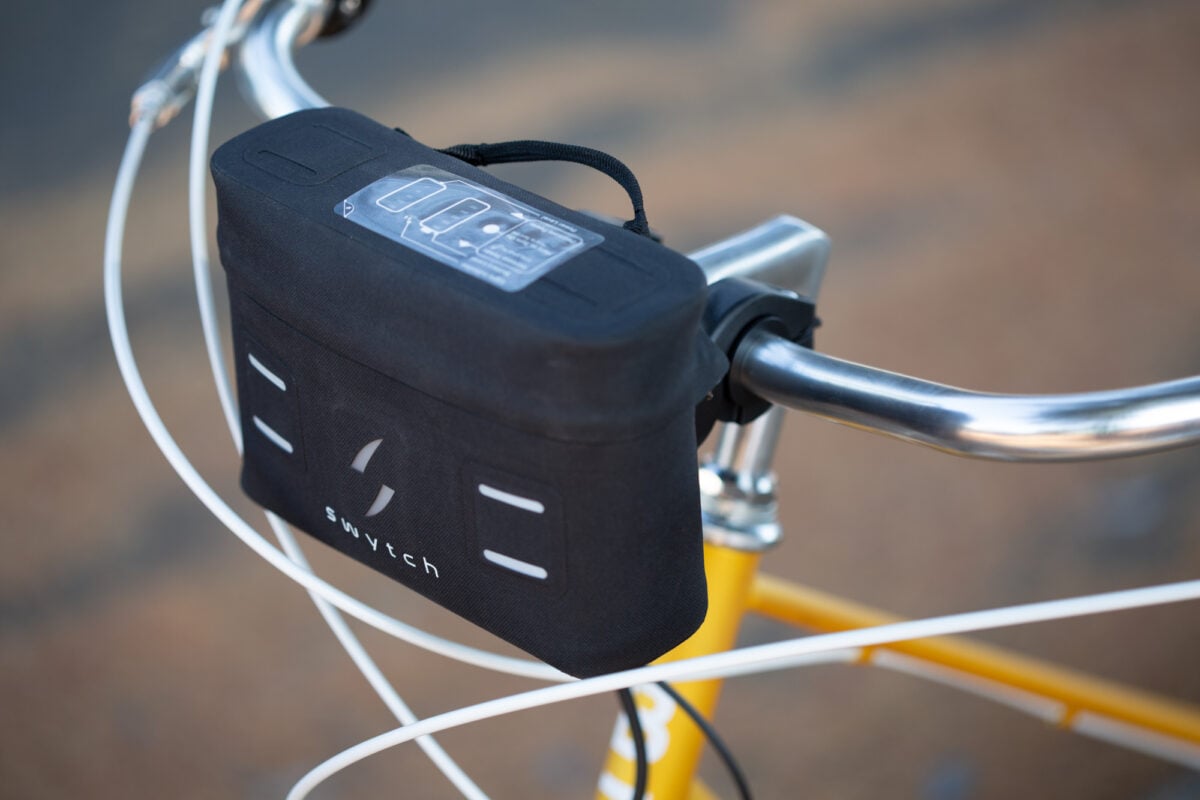
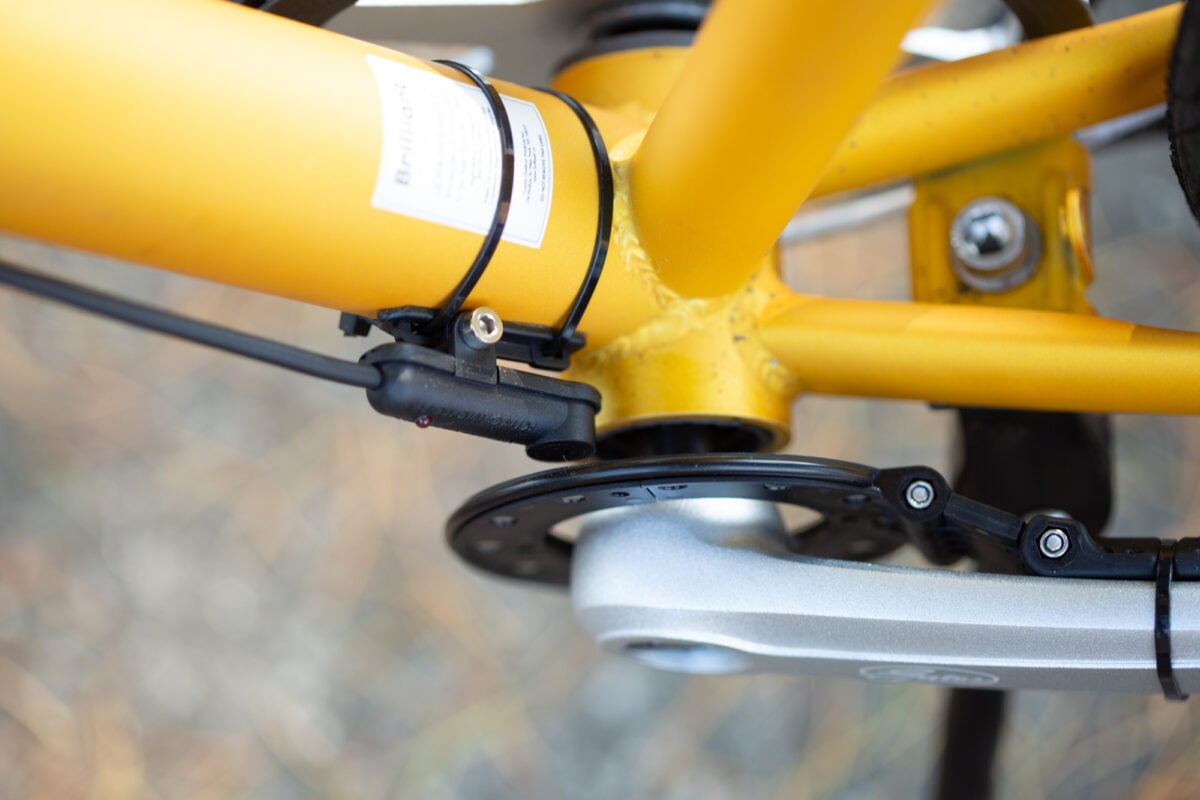

(Photos: Josh Ross/BikePortland)
I’ve tested and ridden a lot of e-bikes. They aren’t my passion, but I love that they are a part of the discussion. Every single person deserves an opportunity to be on a bike and if an e-bike facilitates that, awesome. More people riding is a step towards ending the dependence on cars.
My preference is for the European style of electric bikes. Instead of a Class II bike with a throttle or a Class III that can reach 28 mph, what I enjoy most is a Class I electric bike. They top out at 20 mph making them a little different than a European bike, but the idea is the same: You have to pedal. And when you do, you get some help. It feels like riding a bike downhill with a tailwind.
When you look around for a bike like that, my favorite option is actually a conversion kit paired with a specific bike. I’ve ridden some fantastic high-end e-bikes that have a similar feel (the Lemond bikes for one), but the Swytch electric bike conversion kit paired with a Brilliant bikes Cooper or Carmen model are fantastic at a much lower price.
Advertisement
What does it offer?
You could use any bike you want with the kit. The reason the Brilliant bikes get my nod is because they are inexpensive, they have gears, and they have a belt drive. The Cooper and the Carmen are the same bike with the only difference being the frame style. The Carmen has a step-through top tube and swept back handlebars while the Cooper is your typical flat bar commuter look. Both frames run $550 and come through a US based company that’s really amazing at support.
They also both use three speed gearing paired with rim brakes and a belt drive. The gearing is nice for adjusting cadence and the belt drive is a great feature. There’s nothing wrong with a chain but when it comes to a commuter bike, belt drive is a joy. They never wear out, they never get rusty, they are much less noisy, and you never have to worry about getting grease on your clothes. I have the Carmen and it’s the classic cruiser ride — except it’s ultra smooth.
The second part is the Swytch electric bike conversion. There are four pieces to the kit: motor, power pack, handlebar bracket, and cadence sensor.
Advertisement
The motor itself is in the front wheel hub. Each kit is custom built into the wheel when you order it. That means whatever wheel you need, Swytch can handle. Disc brakes, rim brakes, quick release, solid axle, and whatever size you need is all available. There is also the option of upgrading to a matte black finish on the wheel. In my case I used a silver wheel with a solid axle and the replacement from Swytch is an exact match.
Expect a mellow roll on of power and a gentle push behind every pedal turn.
The actual motor weighs 3.3 lbs and is a little bigger than the palm of my hand. It’s a bright shiny center of the wheel and it fills out the space between the spokes. Through the nut that holds the wheel to the fork there is a thick cable with a protective spring wound around it where it bends. The cable coming from the hub motor connects it to the next piece of the kit.
The piece that connects to the motor is the power pack. This piece contains the battery, the controller, the user interface, and in the case of the Pro version there is also a 400 lumen light. The options for the power pack are either a Pro version or an Eco version and the only difference visually is the addition of the light. Internally the batteries carry more energy in the Pro model, adding an additional nine miles over the Eco, but are dimensionally the same.
Anyone not knowing what it is would think the power pack was a small handlebar bag. It’s a black canvas material with the Swytch logo on the front panel and 4 hits of reflective material. The logo on the Pro model lights up but don’t expect it to help you see much. The size of the power pack puts it a little shorter than my phone, about the same width, and about a 1/3 longer. The official dimensions are 20x14x8 cm but understand that it’s small. The rear has a small fabric handle and the interface with the rest of the system. At the top of the pack there are two places to attach straps and the controls for the system.
Advertisement
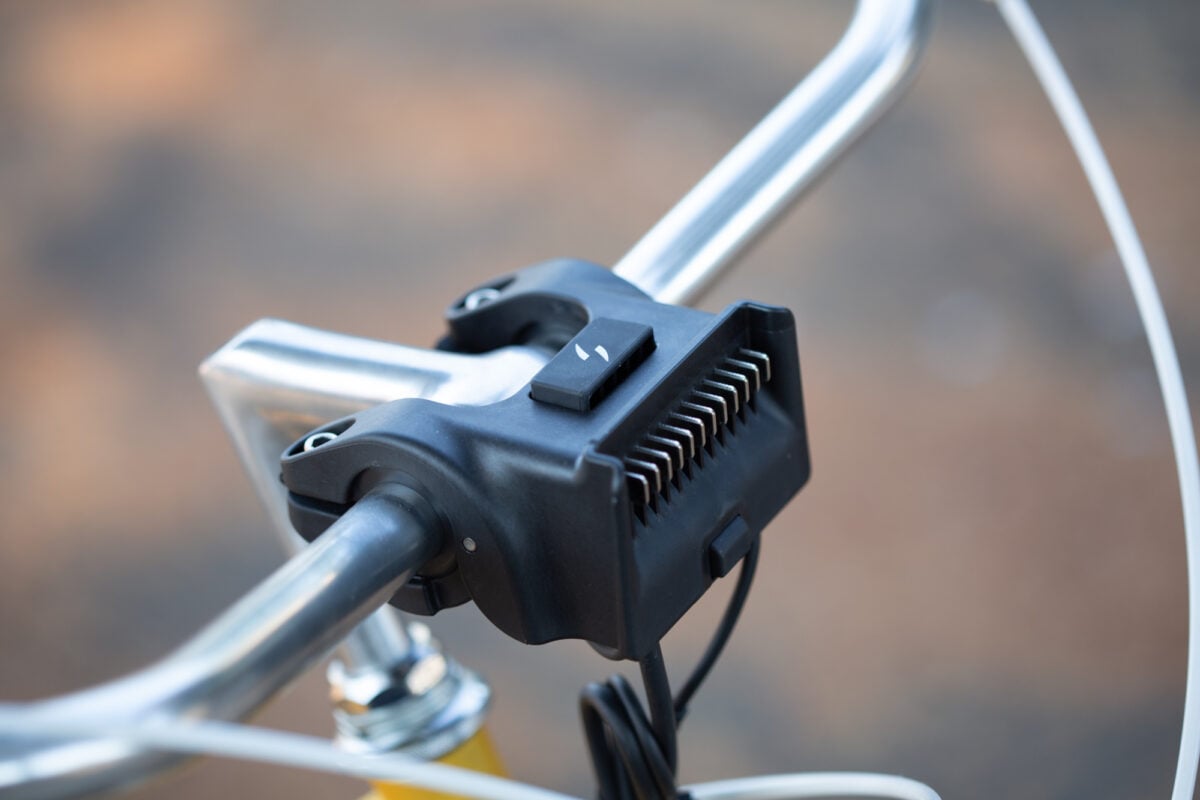

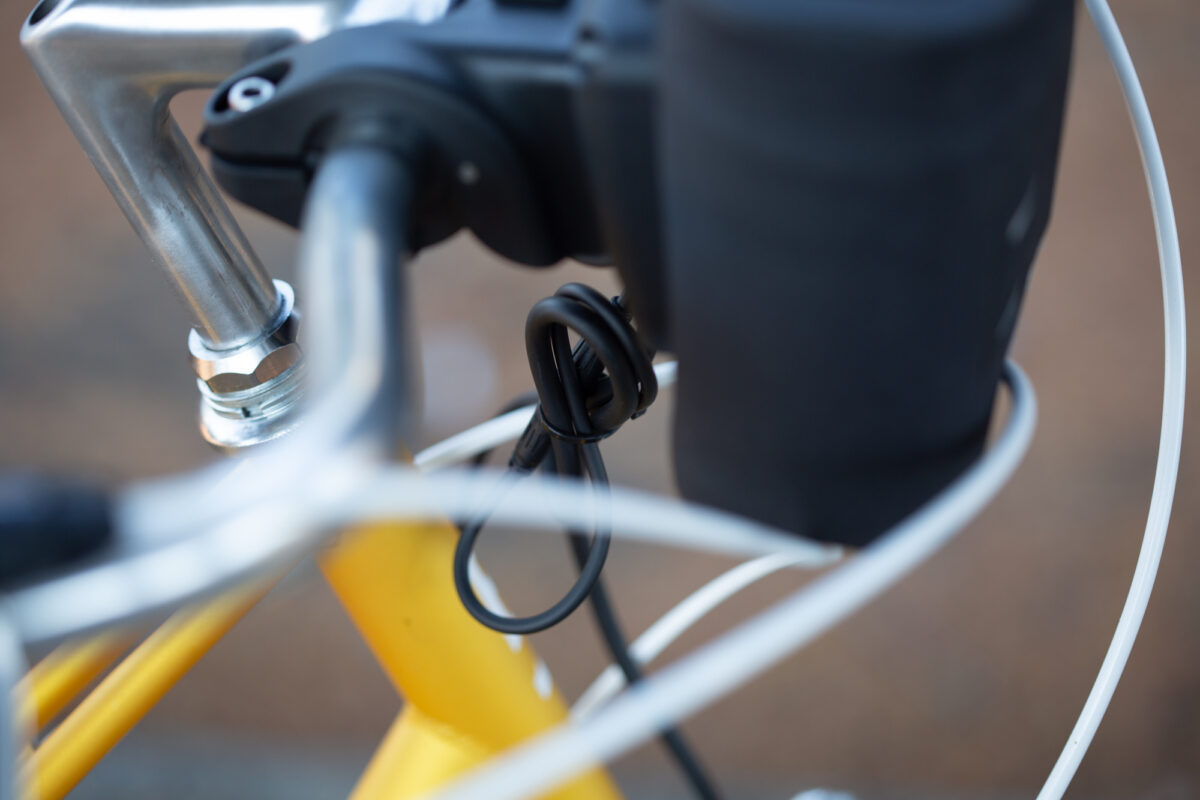
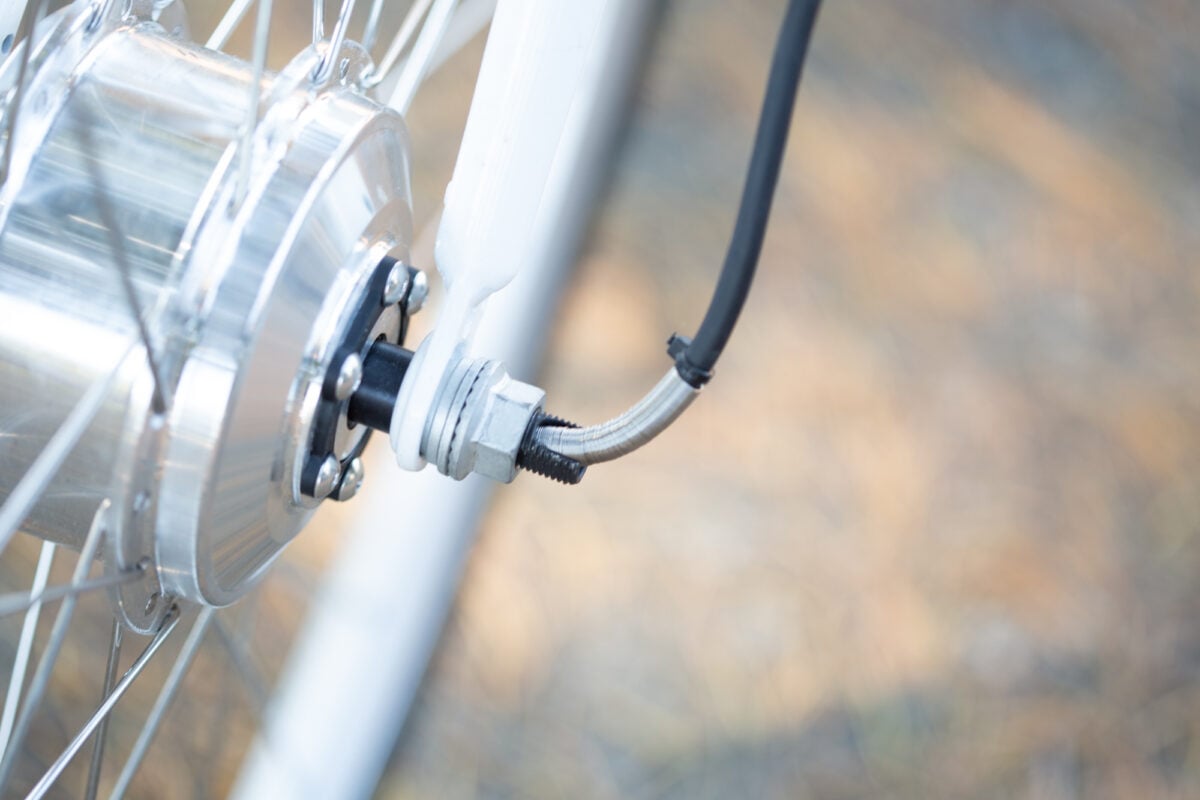
The power pack attaches to the quick-connect handlebar bracket which makes it easy to take on and off the bike. Remove it for storage and transport or even if you have to carry the bike up some stairs. The unit attaches to the bike with two mounts that sandwich the stem. Between them is a soft stabilizer that goes under the stem to prevent rotation. It all works very well.
The last piece that makes the kit work is a pedal-assist system (PAS) or cadence sensor. It’s a universal system with a variety of options for mounting. There’s a series of magnets that need to move with the crank arm and a sensor that needs to attach to the frame. The space between these two pieces needs to be minimal. This unit is the least attractive part of the kit but there’s not much you can do about it.
If you have enough space the most elegant option is to have only the ring of magnets connected to the crank at the bottom bracket. If there’s not enough space there then you have to use an articulated arm that attaches to the inside of the crank arm with zip ties.
What does it take to install?
The whole process took me about an hour. If I was to do it again I could probably do it in 30 minutes and possibly even less. The directions of the actual kit are well written and the steps are easy. You spend far more time figuring out the best way to mount components, or route the cables, than you do anything else.
I started with swapping the tire to the new wheel and swapping wheels on the front of the bike. After I had the wheel swapped, I moved on to the other pieces. The handlebar bracket takes less than five minutes to install and the power pack attaches with no tools. The PAS system was a time suck because of trial and error. I had been sure that the spacing between the crank arm and the frame was perfect for mounting without attaching to the crank arm. I was wrong and it takes a while to get everything placed just in the right spot.
Once I got the PAS components all mounted and it was time for cable management. There’s no right or wrong here but I wanted things to be as clean as possible while also not being too tight. It would be great if there was a way to tuck extra wires and extra connectors into the power pack but I did eventually find a solution I was happy with. Exposed wiring looks minimal and is well secured.
Advertisement
What’s it like to use?
With everything installed it was time to go for a ride. The controls for operating the system are on top of the power pack. They are easy to reach while riding and simple to use. Long press a button to turn things on then use the up and down to adjust the assist level. If you go all the way down it does go to zero.
The whole feeling of the Swytch system complements the Brilliant bike perfectly. There is a somewhat impressive 40Nm on tap but it’s never jerky or aggressive. Expect a mellow roll on of power and a gentle push behind every pedal turn. When the system tops out at 20 mph you won’t really even notice. Claimed range is 50 km (about 30 miles) and I expect the bike is going to be your limit more than the battery. 30 miles is a long way on a cruiser bike.
In terms of power delivery one of the biggest things to wrap your head around is that it’s cadence based. That means the faster you pedal the more support it gives (this is common with a lot of electric motors used by major brands like Bosch and Specialized). My instinct is to match the gear somewhat reasonably to the terrain and let my cadence do what it will. A cadence based e-bike is different because the cadence works similarly to turning up the assist. If you want to keep things easy, put the bike in the easiest gear and turn the pedals faster. With only a three speed bike there are obvious limitations here, especially when climbing a hill. Once you get the hang of it though it’s a pleasant ride.
The whole system only adds about six and a half pounds so this isn’t a heavy bike even in e-bike guise. More importantly though, half that weight easily removes. That makes it much easier to own if you need to lift the bike. It’s also really nice when parking it. You can remove the battery and electronics and if your bike gets stolen while you are in a store it’s less of a sting.
Verdict
The only downside to this conversion is that it will likely cost more than your city bike. The list price, not that you can find it, is $999 for the Universal Eco version and $1,249 for the Pro. Add that to the $550 price of the bike and you’ve reached a list price of $1,799 for a kit you have to put together. Not only that but no bike company wants anything to do with your Swytch system. You’ll have to do any warranty and support directly through Swytch, and they aren’t based in the U.S. (that’s probably not a big deal but I feel it’s important to mention). These details are primarily why I tell people conversion kits don’t make much sense.
For the full price of a Swytch kit and a quality commuter bike, you start to reach the same price as some entry-level e-bikes. There’s a reason I’m sharing this though: the ride quality. I haven’t tested every e-bike that’s in this $1,500 – $2,000 price range, but I’ve tested a few and they don’t feel this good to ride. Also, Swytch frequently offers their kit at a big discount. They order a bunch of kits at once and then offer everyone a deal of 50% off. You’ve got to wait around, three months on average, but it’s a pretty good deal. And of course if you’ve already got a bike to use with the Swytch, the price gets even lower.
Check out SwytchBike.com to learn more.
CORRECTION: This article initially said Class III e-bikes have a throttle. That’s incorrect and the story has been corrected. Sorry for any confusion.



